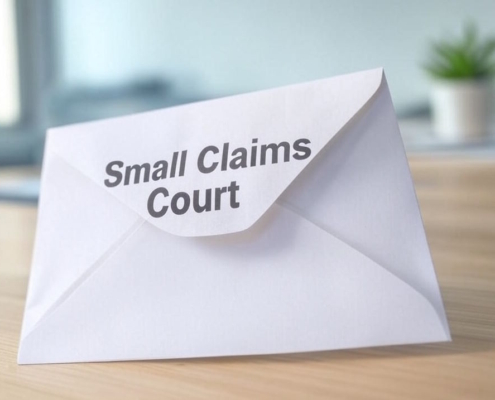How does a class-action lawsuit work and what does it involve?
A class-action lawsuit is a type of civil litigation in which one or more individuals or entities represent a larger group of plaintiffs who have shared damages caused by the defendants’ actions. All members of the class have a shared interest in the disputed matter, even though the specifics of the case could differ.
Both federal and state courts have the authority to hear class actions. Federal courts have exclusive authority over cases involving federal laws.
How come class actions are so common?
Why consolidate all of the cases into a single class-action lawsuit when each plaintiff might bring their own case? Because it usually makes more sense for all parties involved—the plaintiff, the court, and the defendants—to combine all of the separate proceedings into a single lawsuit.
To a large extent, plaintiffs can benefit from class actions. In a class action, there is only ever going to be one group of experts, one group of documents, and one group of witnesses. Because of this streamlined process, it is more cost-effective and convenient for a single law firm to handle a single case rather than a group of law firms attempting numerous cases.
The damages in many individual cases are not high enough to warrant bringing them individually, which is both time-consuming and expensive. A bank, for instance, may be unlawfully charging $20 to $100 in fees to millions of clients. It wouldn’t be worth the lawyer’s time and money to file a $100 lawsuit for every single client because the losses are so small. Class members should invest their time into a single lawsuit that has the potential to recover hundreds of millions of dollars for millions of clients.
If there is just one settlement, then the victims will all get a reasonable amount. When there are numerous lawsuits, the insurance money or the defendant’s assets can end up in the hands of the first few plaintiffs, leaving the others with very little or no money.
It is more cost-effective for the courts to handle a single class action case rather than several smaller ones. When there is only one case, there is only one courtroom and one judge. Additionally, the court schedules will remain unclogged due to the fact that there will only be one class-action suit.
The leveling of playing fields is another advantage of class actions for plaintiffs. While defendant corporations may be better equipped financially to defend a single claim, a legitimate argument arises when a legal firm like Hagens Berman launches a class action lawsuit on behalf of numerous claimants. When a defendant company faces several allegations, it is more inclined to settle the class action and make genuine changes to its misbehavior.
In a class action lawsuit, what are some common scenarios?
You can bring a class-action lawsuit for just about anything. Class actions typically belong to one of these types:
- Securities: Investors who have suffered losses due to wrongdoing on the part of defendant corporations can file a securities class action lawsuit. This type of lawsuit can involve whistleblower or investor fraud litigation.
- Personal injury or product liability: Lawsuits for product liability or personal injury are usually filed when a faulty product hurts a lot of people physically. The production and distribution of a dangerous medicine that many people rely on is an example of a typical kind of pharmaceutical fraud. Mass casualties caused by social work or nursing home neglect, human rights breaches, sexual assault, and sports-related lawsuits are some more kinds of injuries.
- Consumers: Companies that commit systemic fraud or other illegal business activities that defraud or hurt consumers can be held accountable through these class actions. Cases including monopolistic strategies, market allocation agreements, and price fixing are examples of antitrust cases.
- Employment: Class-action lawsuits can be filed against companies by employees who have experienced discrimination, have immigrant worker concerns, wage and hour issues, on-the-job accidents, or who have suffered as a result of safety violations.
In a class action lawsuit, what happens at each stage?
- Figure out which law firm to hire: Anyone who believes they have suffered harm because of the actions of another party should contact a seasoned class-action legal firm that has successfully represented hundreds, if not millions, of claims in the past. Certifying the class, approving the victim as lead plaintiff, trying cases, and settling matters are all craft-intensive processes. It is essential for a class-action law practice to have a track record of success when it comes to litigating the fundamental legal claim.
- Bring a legal case: It is common practice to appoint an individual to act as a class representative when initiating a class action lawsuit; this individual will then file the lawsuit on behalf of all members of the proposed class. It is within the defendant’s right to reply to the lawsuit. The defendants may raise the objection that the conditions for a class action lawsuit have not been satisfied or that the cases would be better dealt with individually.
- Get your certification for the class: Following the filing of the lawsuit, the representative of the class will seek certification or approval of the proposed class by a motion. In order to gain the class’s consent, the class representative and the law firm or firms representing them need to:
- Assert a valid claim against the defendant or defendants: Designate one party to act as the key plaintiff. At the time of class certification, the plaintiff who initiates the lawsuit—typically the class representative—must obtain formal approval to serve as the lead plaintiff. In a class action lawsuit, the lead plaintiff is responsible for hiring a law firm, drafting the complaint, notifying all parties involved, and ultimately agreeing to a settlement. To effectively represent the class, the lead plaintiff needs to be able to relate to other class members, avoid conflicts with them, and be a typical class member themselves.
- Show that there are enough people in the class: This indicates that the lead plaintiff is one of several persons who have suffered comparable injuries. If each person in the class has a different injury, the class might not be acceptable.
- Let people in the class know about it: Notification is often required to be issued to all persons who may be deemed part of the class once the lawsuit is certified as a class action. Methods of notification include media releases, the Internet, and direct mail to known claimants.
- Give people the option to opt in or opt out: In most cases, class membership is automatic; nevertheless, harmed parties typically have the option to not participate in the litigation. The notices ought to specify the option to opt out. Victims of injuries sometimes have the option to not pursue legal action. Sometimes, their only option is to refuse to participate in any settlement at all. If a victim’s injuries are unique, if they suffered a greater financial loss, or if they desire greater say in the outcome of their case, they may choose not to participate in the class action.
- Go to trial or try to work out a settlement: Following certification of the class and expiration of the notice period, the lead plaintiff will initiate legal proceedings against the defendant or defendants. In the absence of a settlement, the matter will move on to a judge’s or jury’s verdict or an appeals court’s decision.
- It is necessary to inform all parties involved in the claim of any decision or settlement: It is standard practice to inform injured parties that they have the right to reject the settlement offer upon sufficient and timely notice. Following the end of the opt-out period and the disbursement of settlement funds, the lead plaintiff and their legal representative will ensure that all qualified victims receive their money.
- Make restitution and divide up the costs: When a class action lawsuit settles, the money usually goes to the plaintiff’s legal team, the lead plaintiff (who often receives a larger share than the rest of the class due to the additional work they put into the case), and finally, the rest of the class. The presiding judge must approve all settlements.































